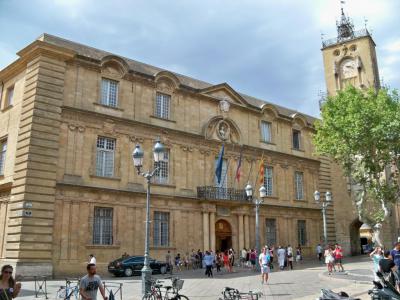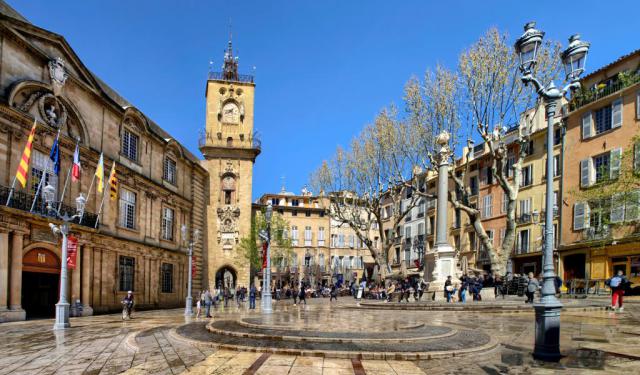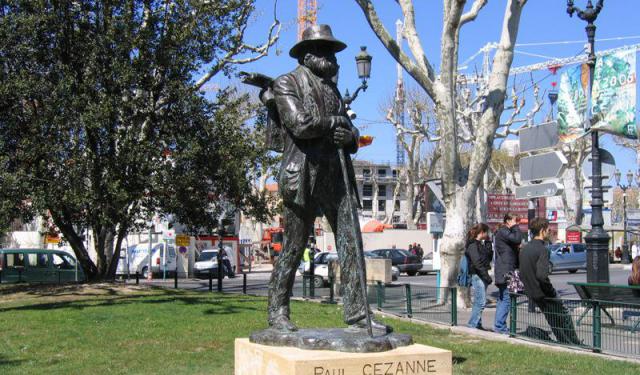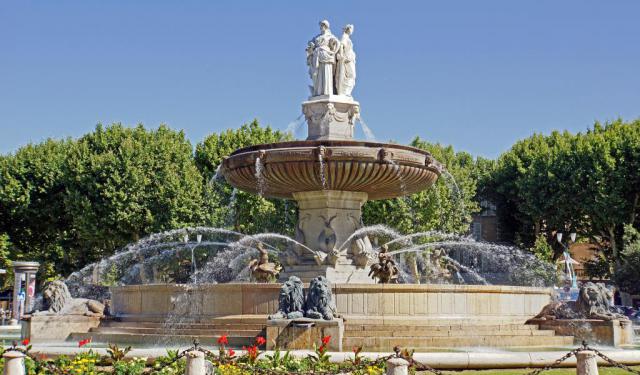Hôtel de Ville d'Aix-en-Provence (Town Hall), Aix-en-Provence
Welcome to the Town Hall of Aix-en-Provence-where history wears an Italian suit and keeps a rather serious face. Overlooking the aptly named Town Hall Square, this dignified building stands on the site of an older structure that lasted until the 14th century, when time and politics said it was due for an upgrade.
The current version took shape between 1655 and 1678, under the guidance of architect Pierre Pavillon, with sculptors Jean-Claude Rambot and Jacques Fosse lending a chisel. It sports a Baroque façade that once flaunted a lot more flair-until the French Revolution came along and trimmed the decorations, leaving behind a leaner, more stoic look. Still, there’s charm in the details: five windows per floor, carved fruit garlands, floral friezes, and a pair of chunky buttresses that give the whole building authority.
Inside, the Hall of the Estates of Provence lines its walls with portraits of French kings and regional counts, alongside painted episodes from the city's past-some solemn, some theatrical, all unmistakably Provence.
Next door, the Clock Tower dates back to 1510 and still houses an astronomical clock installed in 1661. At its base, you’ll spot white limestone blocks thought to be remnants of a Roman gateway-reused so the city keeps the Roman theme going strong.
Top it off with a 16th-century wrought-iron bell cage that once rang to remind peasants of their landlord visit-cash, carrots, or elbow grease. A gentle nudge from the past, reminding you that taxes were never optional.
And if you're looking for a romantic twist, here it is: in 1886, Paul Cézanne tied the knot with Marie-Hortense Fiquet right inside these walls. She’d go on to appear in 27 of his paintings-perhaps not always smiling, but immortal nonetheless.
In 1995, the Town Hall officially joined the ranks of historical monuments, though frankly, it had been acting like one for centuries.
The current version took shape between 1655 and 1678, under the guidance of architect Pierre Pavillon, with sculptors Jean-Claude Rambot and Jacques Fosse lending a chisel. It sports a Baroque façade that once flaunted a lot more flair-until the French Revolution came along and trimmed the decorations, leaving behind a leaner, more stoic look. Still, there’s charm in the details: five windows per floor, carved fruit garlands, floral friezes, and a pair of chunky buttresses that give the whole building authority.
Inside, the Hall of the Estates of Provence lines its walls with portraits of French kings and regional counts, alongside painted episodes from the city's past-some solemn, some theatrical, all unmistakably Provence.
Next door, the Clock Tower dates back to 1510 and still houses an astronomical clock installed in 1661. At its base, you’ll spot white limestone blocks thought to be remnants of a Roman gateway-reused so the city keeps the Roman theme going strong.
Top it off with a 16th-century wrought-iron bell cage that once rang to remind peasants of their landlord visit-cash, carrots, or elbow grease. A gentle nudge from the past, reminding you that taxes were never optional.
And if you're looking for a romantic twist, here it is: in 1886, Paul Cézanne tied the knot with Marie-Hortense Fiquet right inside these walls. She’d go on to appear in 27 of his paintings-perhaps not always smiling, but immortal nonetheless.
In 1995, the Town Hall officially joined the ranks of historical monuments, though frankly, it had been acting like one for centuries.
Want to visit this sight? Check out these Self-Guided Walking Tours in Aix-en-Provence. Alternatively, you can download the mobile app "GPSmyCity: Walks in 1K+ Cities" from Apple App Store or Google Play Store. The app turns your mobile device to a personal tour guide and it works offline, so no data plan is needed when traveling abroad.
Hôtel de Ville d'Aix-en-Provence (Town Hall) on Map
Sight Name: Hôtel de Ville d'Aix-en-Provence (Town Hall)
Sight Location: Aix-en-Provence, France (See walking tours in Aix-en-Provence)
Sight Type: Attraction/Landmark
Guide(s) Containing This Sight:
Sight Location: Aix-en-Provence, France (See walking tours in Aix-en-Provence)
Sight Type: Attraction/Landmark
Guide(s) Containing This Sight:
Walking Tours in Aix-en-Provence, France
Create Your Own Walk in Aix-en-Provence
Creating your own self-guided walk in Aix-en-Provence is easy and fun. Choose the city attractions that you want to see and a walk route map will be created just for you. You can even set your hotel as the start point of the walk.
Aix-en-Provence Introduction Walking Tour
Aix-en-Provence may not have coastal views, but it compensates in style with its Roman bathwater and city logistics. Founded in 123 BC by Roman consul Gaius Sextius Calvinus, this southern French settlement-originally named Aquae Sextiae, which means “Waters of Sextius”-was built around its thermal springs and the promise of a good soak. Centuries later, the name was streamlined to “Aix”,... view more
Tour Duration: 1 Hour(s)
Travel Distance: 1.7 Km or 1.1 Miles
Tour Duration: 1 Hour(s)
Travel Distance: 1.7 Km or 1.1 Miles
In the Footsteps of Paul Cézanne
Paul Cézanne, often called the “father of modern art” for bridging 19th-century post-impressionism and the birth of early modernism, caused a bit of a stir early in his career. While staying with Doctor Gachet in Auvers-sur-Oise, he painted his take on Manet’s Olympia-but with a twist. Instead of just a reclining nude, Cézanne inserted himself into the scene, back turned, like a shy... view more
Tour Duration: 2 Hour(s)
Travel Distance: 3.0 Km or 1.9 Miles
Tour Duration: 2 Hour(s)
Travel Distance: 3.0 Km or 1.9 Miles
Aix-en-Provence Fountains and Squares Tour
Aix-end-Provence is known for its fountains. With more than 1,000 fountains, a tourist could spend weeks walking around the city without glimpsing them all. The fountains began appearing under the Roman empire when the Romans discovered Aix's natural thermal water source. They referred to the area as Aquae Sextiae or the Waters of Sextius.
The fountains appear throughout the city and are... view more
Tour Duration: 1 Hour(s)
Travel Distance: 1.6 Km or 1 Miles
The fountains appear throughout the city and are... view more
Tour Duration: 1 Hour(s)
Travel Distance: 1.6 Km or 1 Miles






